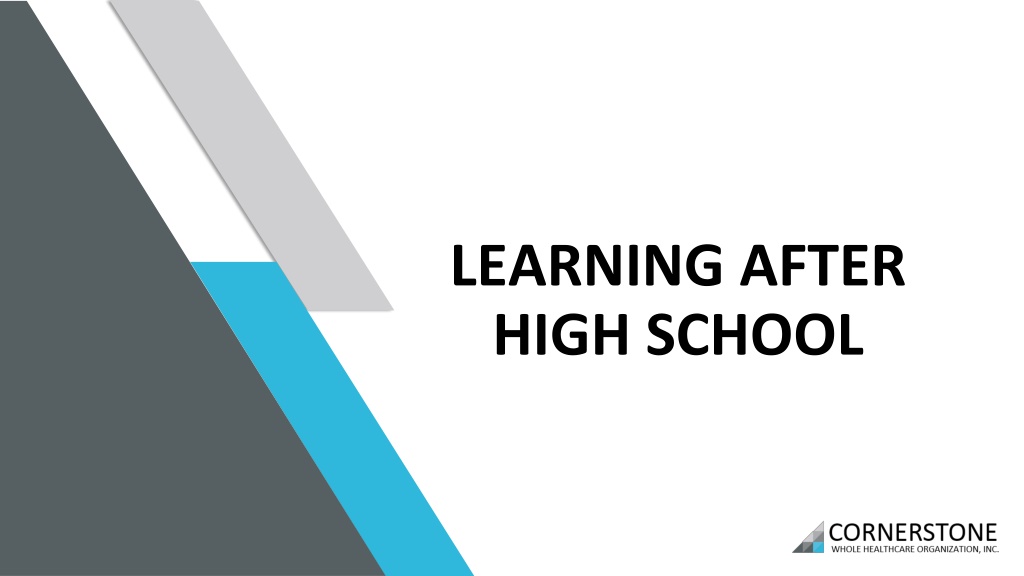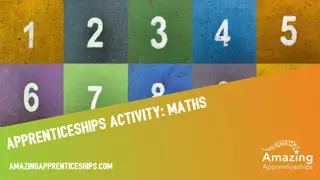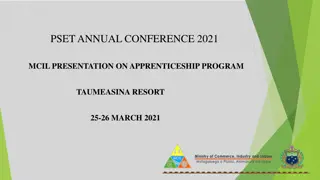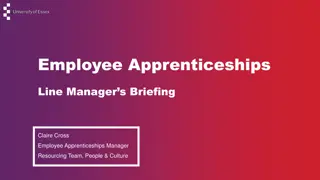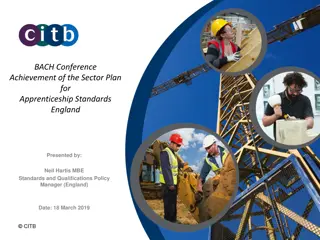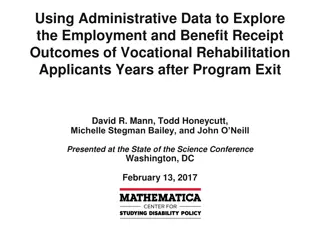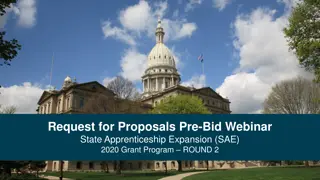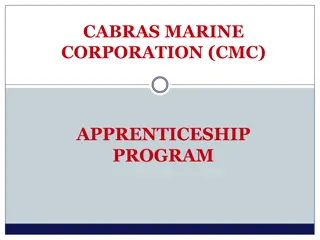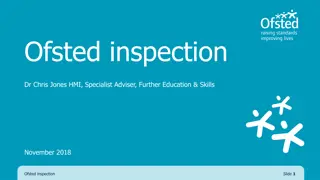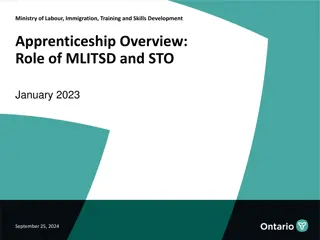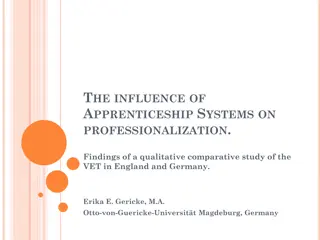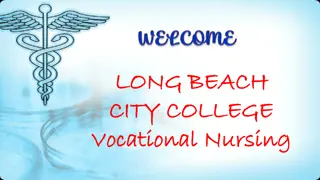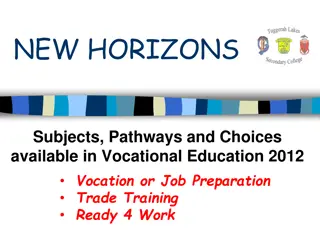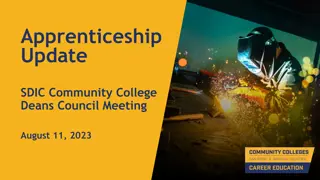Options for Learning After High School: Vocational School, College, Apprenticeship, & More
Learning after high school opens up various opportunities like vocational/trade school, college, on-the-job training, apprenticeship, military service, and self-learning. Vocational schools provide job-specific skills, colleges offer degrees and transfer options, on-the-job training by employers, apprenticeships for formal trades training, and military service for a structured path. Each path caters to different preferences and career aspirations.
Download Presentation

Please find below an Image/Link to download the presentation.
The content on the website is provided AS IS for your information and personal use only. It may not be sold, licensed, or shared on other websites without obtaining consent from the author. Download presentation by click this link. If you encounter any issues during the download, it is possible that the publisher has removed the file from their server.
E N D
Presentation Transcript
LEARNING AFTER HIGH SCHOOL
LEARNING CONTINUES AFTER SCHOOL Photo by Jesse Bowser on Unsplash
OPTIONS FOR LEARNING AFTER HIGH SCHOOL VOCATIONAL/TRADE SCHOOL COLLEGE ON-THE-JOB TRAINING APPRENTICESHIP MILITARY SERVICE ACADEMY LEARN ON YOUR OWN
VOCATIONAL/TRADE SCHOOL Teach skills specific to a particular job or profession Sample careers include culinary arts, mechanics, and technology-related fields Local examples are Magic Valley Coop Service Agency in Twin Falls Cassia Regional Technical Center in Burley VOCATIONAL/TRADE SCHOOL COLLEGE ON-THE-JOB TRAINING APPRENTICESHIP MILITARY SERVICE ACADEMY LEARN ON YOUR OWN
COLLEGE Community colleges (two years) Offer associate degrees Also offer courses that transfer to four- year colleges or universities Closest option: College of Southern Idaho VOCATIONAL/TRADE SCHOOL COLLEGE ON-THE-JOB TRAINING APPRENTICESHIP Four-year colleges/universities Offer bachelor s degree Closest options: University of Idaho Extension at Lincoln Idaho State University-Twin Falls MILITARY SERVICE ACADEMY LEARN ON YOUR OWN
ON-THE-JOB TRAINING VOCATIONAL/TRADE SCHOOL COLLEGE Some employers train you after they hire you Training might take a few days, a few weeks, or a few months These are rare most jobs expect you to learn what you need before they hire you Examples include landscaper, bank teller, and store clerk ON-THE-JOB TRAINING APPRENTICESHIP MILITARY SERVICE ACADEMY LEARN ON YOUR OWN
APPRENTICESHIP VOCATIONAL/TRADE SCHOOL COLLEGE ON-THE-JOB TRAINING This is a longer, more formal on-the-job training program You earn lower wages while you shadow a skilled worker in a specific trade Often take years Examples include electricians, plumbers, and carpenters APPRENTICESHIP MILITARY SERVICE ACADEMY LEARN ON YOUR OWN
MILITARY VOCATIONAL/TRADE SCHOOL COLLEGE ON-THE-JOB TRAINING You can enlist in the military right after high school Military officers will teach you all you need to know once you enlist You can usually take classes and earn money toward future education during your service time APPRENTICESHIP MILITARY SERVICE ACADEMY LEARN ON YOUR OWN
SERVICE ACADEMY VOCATIONAL/TRADE SCHOOL COLLEGE ON-THE-JOB TRAINING APPRENTICESHIP Service academies prepare firefighters, police, and state troopers. Two examples are the Idaho State Police Training program and the Fire Science program at College of Southern Idaho (for firefighters) MILITARY SERVICE ACADEMY LEARN ON YOUR OWN
LEARN ON YOUR OWN VOCATIONAL/TRADE SCHOOL COLLEGE ON-THE-JOB TRAINING APPRENTICESHIP If you re motivated, this is always an option You can take learn almost anything you need on the Internet Most people, though, find it hard to do this on their own MILITARY SERVICE ACADEMY LEARN ON YOUR OWN
WHICH PATH IS BEST FOR YOU? Photo by James Wheeler on Pexels
